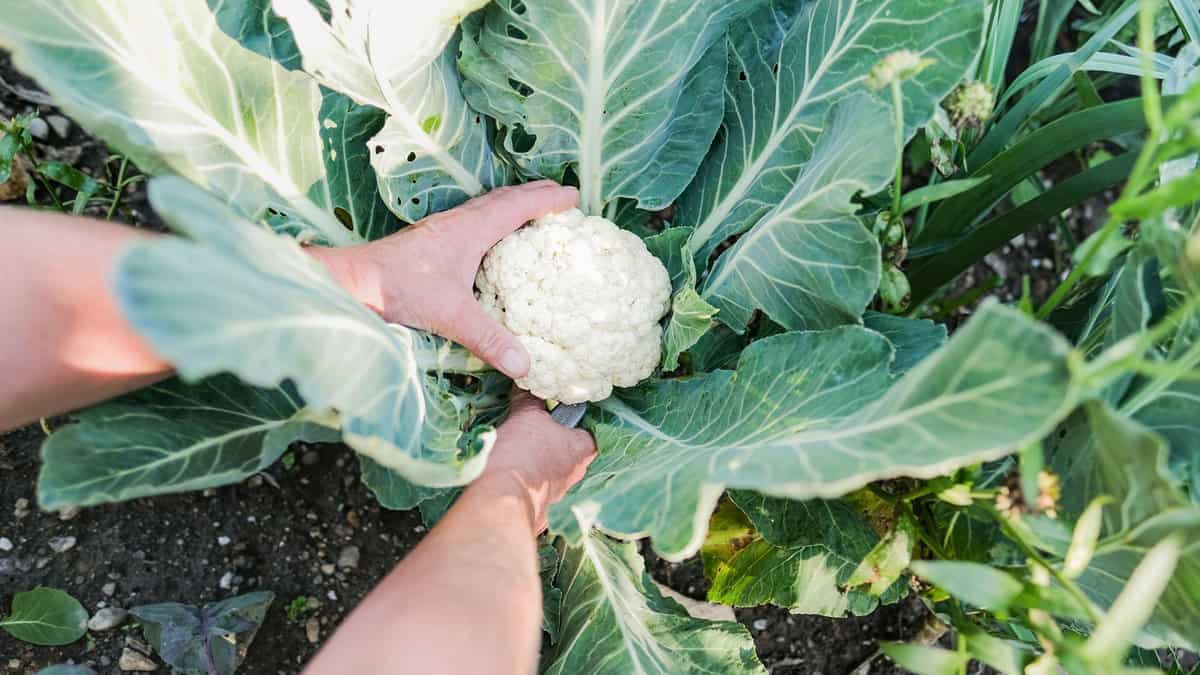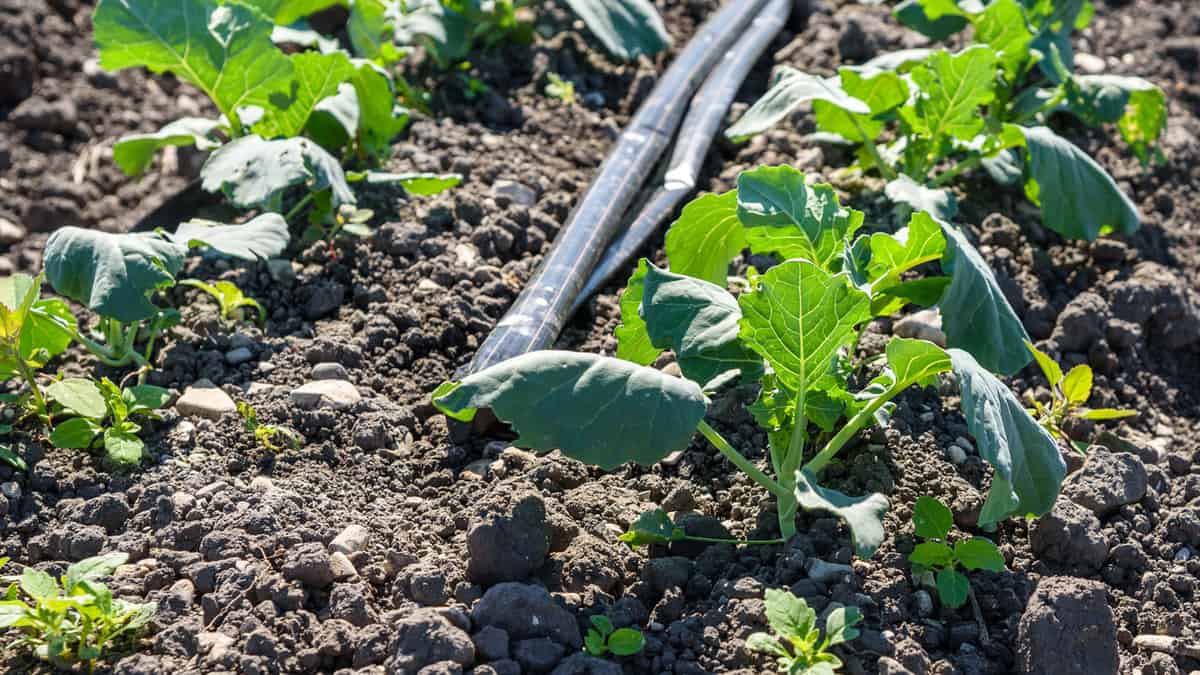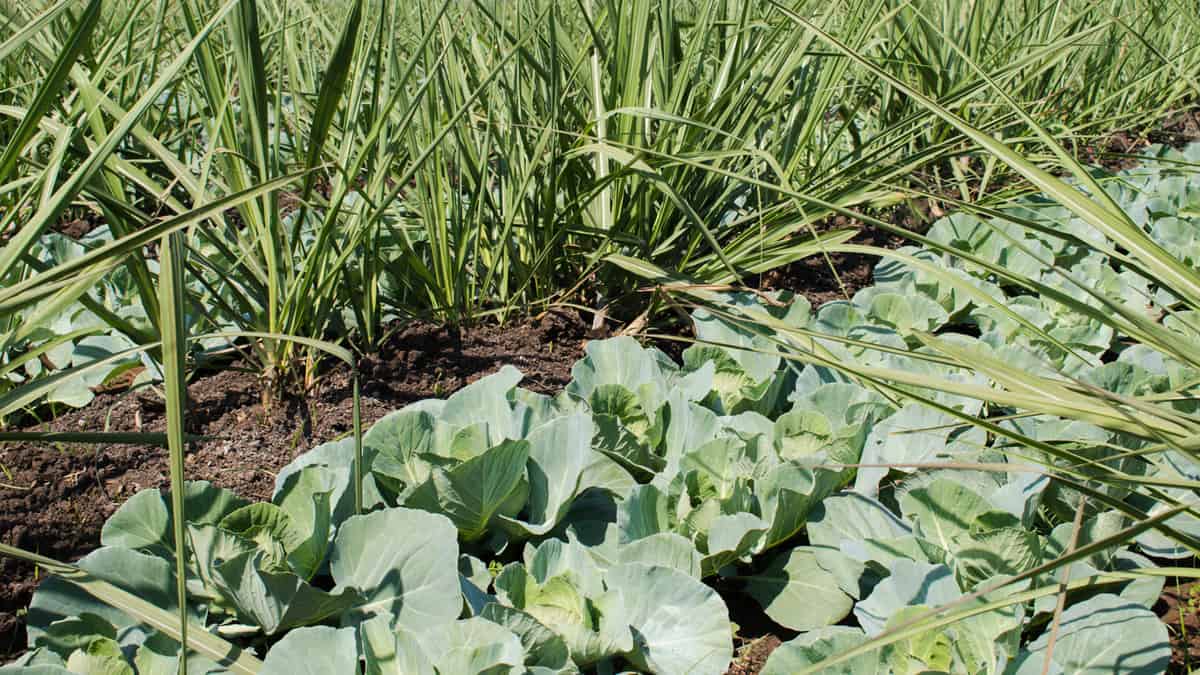Cauliflower is a fantastic addition to any home garden, providing both a versatile ingredient for your dishes and a rewarding challenge for your green thumb.
To ensure a healthy, bountiful yield, it is essential to understand and implement proper cauliflower plant spacing.
By giving your cauliflower plants the space they need, you can promote optimal growth and avoid common issues that could affect your harvest.

Cauliflower Plant Spacing Essentials
When planting cauliflower, provide adequate spacing between plants to maximize growth and yields.
Ideally, you should plant seeds ¼-½ inch deep, 2-3 weeks before the last frost in your region.
Once seedlings emerge, thin them or transplant your cauliflower 12-18 inches apart in a row, with rows 2-3 feet apart.
Proper spacing allows for:
- Sufficient sunlight to reach all parts of the plant
- Better air circulation, reducing the risk of diseases
- Easier access for weeding and harvesting
Moreover, different cauliflower varieties might have specific planting requirements.
It's always a good idea to consult the seed packet or nursery tag for recommended spacing guidelines.
Benefits of Proper Spacing
There are several advantages to maintaining the correct spacing between cauliflower plants. These include:
Improved Plant Growth
Adequate spacing allows individual plants to receive proper nutrients, sunlight, and water, promoting better growth and development.
Higher Yields
With enough room to grow, cauliflower plants can produce larger and healthier curds, leading to increased harvests.
Reduced Pest Problems
Proper spacing helps minimize the risk of pest infestations by promoting better air circulation and reducing plant contact, which can spread pests from one plant to another.
Less Disease
A well-spaced planting promotes good air circulation, minimizing the likelihood of fungus and other diseases caused by excess moisture.

Boosting Your Yield
Cauliflowers can be harvested within 3 to 6 months so it's important to provide it with proper care to boost your yield. Here are some care tips.
Fertilization
To enhance the growth and yield of your cauliflower plants, it is crucial to maintain proper soil fertility.
Start by conducting a soil test to determine the pH and fertility needs of your garden. The ideal soil pH for cauliflower plants should be between 6.5 and 6.8.
In the absence of a soil test, incorporate 3 to 4 pounds of a 5-10-15 fertilizer or equivalent per 100 square feet of garden area.
After the initial fertilization at planting time, apply 2 pounds of additional 5-10-15 fertilizer per 100 square feet throughout the growing season.
Watering and Weeding
Cauliflower plants require consistent moisture for optimal growth.
Ensure you provide your plants with a regular watering schedule, targeting about 1 to 1.5 inches of water per week.
To help retain moisture and suppress weeds, apply a layer of organic mulch around the base of your plants.
This not only benefits the cauliflower's growth but also reduces the maintenance required for weeding.
Remember to keep an eye on the weeds, as they can compete with your plants for nutrients and water.
Regularly remove them to ensure your cauliflowers have the resources they need to thrive.
Pest and Disease Management
Proper pest and disease management is pivotal for a bountiful cauliflower crop.
Common pests, like cabbage worms and aphids, can be controlled using organic or chemical insecticides.
Additionally, ensure you practice crop rotation by not planting cauliflower or other Brassica family members like cabbage, broccoli, and kale in the same location for at least two years.
Crop rotation can help limit the buildup of pests and diseases in the soil.
Keep an eye out for diseases such as clubroot, black rot, and downy mildew, which could affect your cauliflower plants. Planting disease-resistant varieties can help.
You can also implement a preventive approach by removing infected plant material, maintaining proper plant spacing for good air circulation, and keeping your garden clean.
When to Harvest
Cauliflower thrives in cool temperatures, typically between 50°F and 70°F.
Some varieties are perfect for spring planting, growing quickly and producing curds before hot summer weather sets in.
It would help if you kept an eye on the cauliflower head's size and color, as this indicates the ideal time for harvesting.
In warm temperatures, the heads become ready only a few days after blanching.
In cooler weather, it may take up to two weeks for heads to reach their harvest size.
Aim to complete harvesting before the first frost, as cold temperatures can discolor the heads.

How to Harvest
When your cauliflower heads reach the desired size, it's time to harvest. Follow these steps to ensure a successful harvest:
- Choose a dry day for harvesting to promote the best storage conditions.
- Use a sharp, clean knife to cut the stem of the cauliflower head, leaving 1-2 inches of stem attached.
- Gently lift the head out of the garden, taking care not to damage the surrounding plants.
- Remove any outer leaves and trim off the excess stem.
After harvesting, it is crucial to cool the cauliflower down immediately to a temperature between 32°F and 40°F.
This will help maintain its freshness and allow you to store it for up to three weeks.
Good Companion Plants to Enhance Cauliflower Growth
Companion planting allows you to make efficient use of space in your garden and create mutually beneficial relationships between your plants.

Good companion plants for cauliflower include:
Legumes
Beans, peas, and clover are excellent choices because they help fix nitrogen in the soil, providing essential nutrients for cauliflower growth.
These plants also conserve space, since you can grow them vertically on stakes or trellises.
Leafy greens
Lettuce, spinach, and Swiss chard go well with cauliflower, as they have similar water and shade requirements.
Additionally, leafy greens can provide ground cover, helping to keep the soil cool and moist, which cauliflower appreciates, as it has a shallow root system.
Herbs
Aromatic herbs such as dill, rosemary, and sage serve as natural pest repellents, deterring insects that might harm your cauliflowers.
These herbs also benefit from the shade provided by cauliflower plants, ensuring optimal growth conditions for both.
Onions, Garlic, and Chives
These allium family members help to deter pests, such as aphids, that can damage cauliflower plants.
Their strong aroma masks the scent of cauliflower, making it harder for pests to locate their preferred host.
Flowers
Marigolds, nasturtiums, and sunflowers are fantastic choices to plant near cauliflower.
They attract beneficial insects like ladybugs and lacewings, which prey on harmful pests. Moreover, their vibrant colors add beauty to your garden.
Right Spacing Equals Better Yield
Proper spacing for your cauliflower plants can significantly improve the yield and quality of your homegrown crops.
Following the recommended spacing guidelines will help you to avoid overcrowding, promote better nutrient absorption, and reduce the risk of disease.
For more information on growing a vegetable garden, go here:
